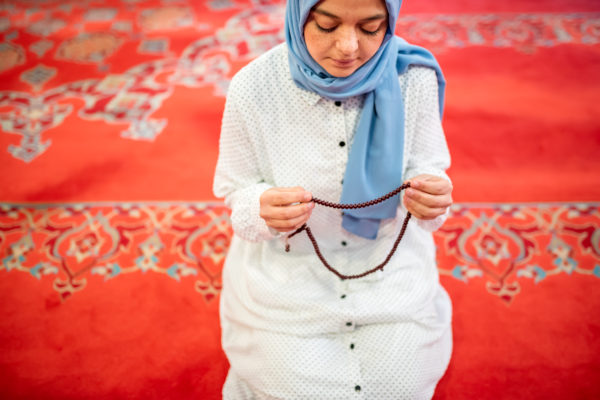“With regards to weight lifting, there’s many studies that suggest that weightlifting in a fasted state increases the anabolic response”
“With regards to weight lifting, there’s many studies that suggest that weightlifting in a fasted state increases the anabolic response”
As the fitness industry continues to grow, it’s likely hundreds of thousands of Muslims will be stumped when it comes to training methods during the Month of Ramadan. For the more casual partakers, a month off activity often occurs, but for many others, especially those involved in performance sports, this simply isn’t an option. With Ramadan taking place in Summer and the ‘consumption hours’ at a low, training post-fast isn’t ideal for many.
Though we hear much about the benefits of intermittent fasting and training in this state, we simply cannot compare this to the strict no-fluids rule of Ramadan – naturally, one can more feasibly train when on a diet of black coffee and water. However, there are still some lessons we can take from intermittent fasting; and it’s all in the science.
With regards to weight lifting, there’s many studies that suggest that weightlifting in a fasted state increases the anabolic response – that is, induces more effective nutrient ingestion in order to boost muscle growth. It’s also important to note that fasting increases the body’s growth hormone production by up to 2000%. From Hugh Jackman to Terry Crews, training fasted has been utilised by the best of them.
Cardio may portray a different issue altogether, as more glucose supply is needed for a typical session. Despite evidence that suggests fasted cardio will lead to a breakdown in protein and over time, muscle. A study done on adult males performing cardiovascular exercise in a ‘Ramadan environment’ showed that there was little difference in performance between a fasted and non-fasted state, concluding that there was “no negative effect on the physical aerobic performance of these subjects while exercising at moderately heavy intensity under thermally neutral conditions, during the month of Ramadan.”
One notable study is one measuring the performance of athletes in various plyometric tests – perhaps the best indicator of performance rather than muscle mass or fat loss. In any sense, it was concluded that Ramadan fasting “has little effect on aerobic performance and on very short duration sprinting and jumping test performance.”
Outside of the science, anecdotal evidence based on fasting athletes such as Hakeem Olajuwon and Mesut Ozil, both Championship winning players in their own right, suggests fasting isn’t too detrimental.
So what have we concluded so far? Countless studies appear to suggest performance will remain unchanged during a fasted state, and in fact, various hormone changes can occur during training such that it can aid muscle growth and fat loss. Is this, however, realistic for the regular athlete – especially those who have a daily work/university schedule? To test this, I have, in the first 15 days of Ramadan, attempted to maintain my regular exercise schedule, based on my current track and field regime. Here is my experience:
While cutting down my track sprinting sessions to once a week, I have maintained my PHUL workout regime, weight training 4 times a week. While performance has exceeded expectations (with two personal records being matched), there are some adjustments that athletes will need to make during this month:
1. Cut volume OR weight
While performance during exercise is usually unaffected, fatigue will kick in fairly quickly if you carry on your usual volume AND weight. Note, that in order to maintain and make progress during this month, you should keep one of these variables the same. Personally, the method of cutting volume by 30% or weight by 10% has worked wonders.
2. Limit cardio
As said earlier, your body simply won’t have enough nutrient supply to keep up training heavily. College track and field, for example, required a large breakfast and lunch, as well as a carbohydrate-heavy meal 90 minutes prior to training. If you are involved in any sport, take it easy on the training – or if you do go a little harder, keep the training close to sundown so you can get your nutrients afterwards.
That said, walking and other low-impact exercise can help people of all levels maintain some notion of fitness during the month – just keep an eye out for dehydration.
3. Prioritise compound movements
Ramadan is not the time to work on those lagging calves – rather, performing compound movements such as the deadlift or power clean is the most efficient way not only to train, but to maintain muscle mass. Accessory exercises can be doubled down after the month!
4. Sleep well
Sleep is as important as training during the month. Not only will a poor sleeping pattern limit performance, it will also limit the secretion of growth hormones. It’s all too easy to get into the habit of sleeping for 6 hours or less; avoid this.
5. Diet
Contrary to popular belief, diet during Ramadan doesn’t have to be all that bad. While containing a little too much oil, ‘mosque food’, consisting of rice, meat and vegetables, is a suitable meal to break your fast with. After avoiding fried supplements that invariably come with Ramadan, I recommend a whey protein shake, cereal, fruit, yoghurt and milk.
by Kumail Jaffer





